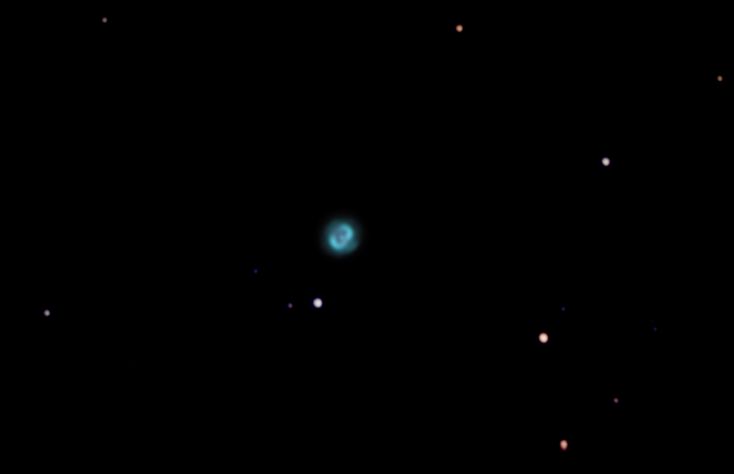
This planetary nebula is relatively bright and displays a bluish-green color. The color primarily comes from fluorescent light emitted by doubly ionized oxygen ( OIII ) at wavelengths of 5007 and 4959 angstroms. Listed at magnitude 8.3, the nebula holds magnification well. The nebula is only 0.6 arc-minutes in diameter, so magnification of at least 50x is required to enlarge the small nebula so it does not appear stellar. In larger amateur size instruments, the darker center can be seen, and it gives the nebula an annular appearance. The central star is a bluish drawf with a temperature of about 75,000 degrees K. The nebula got its name from the fact that its appearance resembles a blue snowball in small telescopes.
Planetary nebula can also be detected by alternately inserting and removing a nebula filter in front of an eyepiece. The nebula will jump out from the star field, because the nebula will not be dimmed by the nebula filter to the same degree that the stars will be reduced in brightness.
This is an RGB composite CCD image taken with an SBIG ST-8XE CCD at prime focus on a Takahashi Mewlon 210 at f11.5. This image was taken from my backyard in Scottsdale, Arizona.
NGC 7662
Constellation: Andromeda
RA: 23h 26m 10s Dec: +42d 33' 47"
June 16, 2005
Image by Sid Leach
Scottsdale, Arizona
Recent Images.
Complete list of images.
Description of equipment used to acquire images.
Home
Feedback and comments should go to Sid